There are times when I will work in the studio on a landscape using a photographic image on my computer screen. I find this to be much better than working from a photograph. It is not the best scenario as I much prefer to work “en plein air” because I take my cues from nature and it is actually easier. When I work from a moniter image I always start with a black and white image. I reduce the amount of detail to a minimum and concentrate on the composition and value using large blocks of tone.

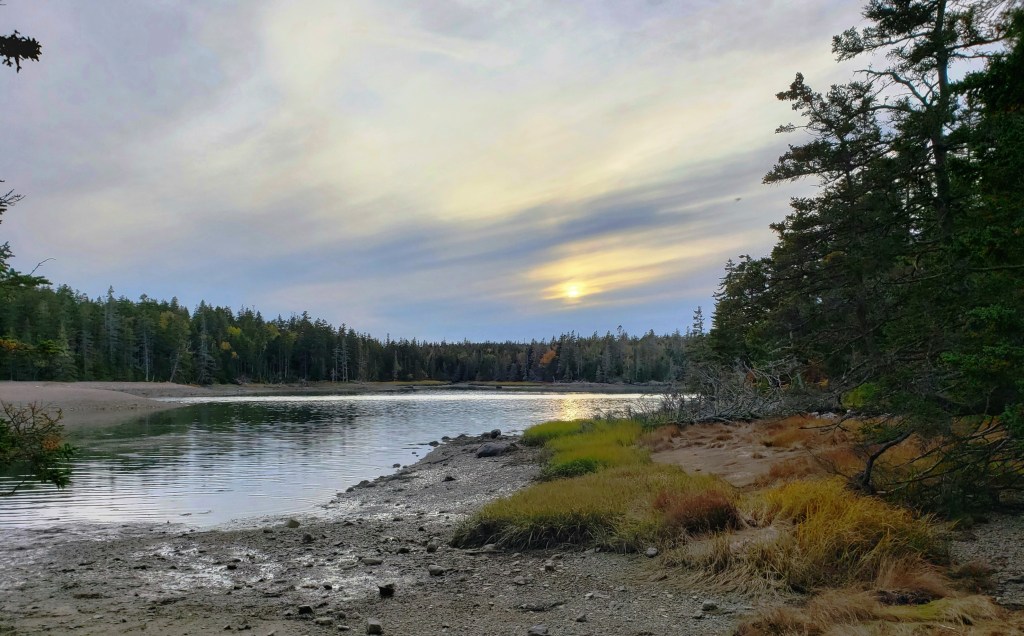
It was our last day in Maine and we decided to take a walk on one of the nearby trails off of Route 102A on Mount Desert Island called the Ship Harbor Nature Trail. In this painting we see a moment when the sun is setting. It is a fleeting moment and does not last very long. I knew I would not have time to go back to the car and get my gear so I decided to snap a few pictures make some notes in my journal and just sit and watch as the sun went down. I should always remember to at least carry pad and pencil but all I had of this moment was my memory of the event and a photo.
This painting will be a real challenge for me. I have only painted a few sunsets. I love looking at sunsets but not painting them. For this painting I create a loose “grisaille” which is executed entirely in shades of one color. Many paintings of the past especially during the Renaissance were constructed with a grisaille underpainting in much more detail then I plan to do. In this case, I utilized a mix of all the colors that were leftover on my palette from the day before and it formed a nice warm grey. Another favorite mixture for grey is ultramarine blue + burnt sienna. If I don’t use a grey mixture, I will use burnt sienna (or raw umber). This tone is mixed with turpentine and quickly applied to the entire canvas in a thin semi-transparent wash of color to “tone” the canvas a medium value. If the value is too dark simply keep rubbing with a rag to achieve a medium value. Next do a light gestural drawing to suggest the forms and do some measuring to place the forms in relation to the canvas. Next lay in the dark values and the lighter values can be had by “wiping” out some of the lighter areas with a brush or rag. This is called an “open grisaille” when you can pull lights out by wiping down to the original surface. I am purposely keeping the forms somewhat loose. As I said this is not a very high detailed grisaille. This is simply a way to achieve a pleasing composition using a combination of drawing and tonal breakdown to create form and design.
Stage one: Initial drawing & grisaille. Trying to find the large abstract shapes that will fit together like a puzzle to create a pleasing composition. The large mass of trees on the right define that space. I notice the one small tree is pointing in the direction of the middle ground. Creating a “directional movement” is always good. There are several triangular wedges that hold the foreground together. I am feeling good about the composition.

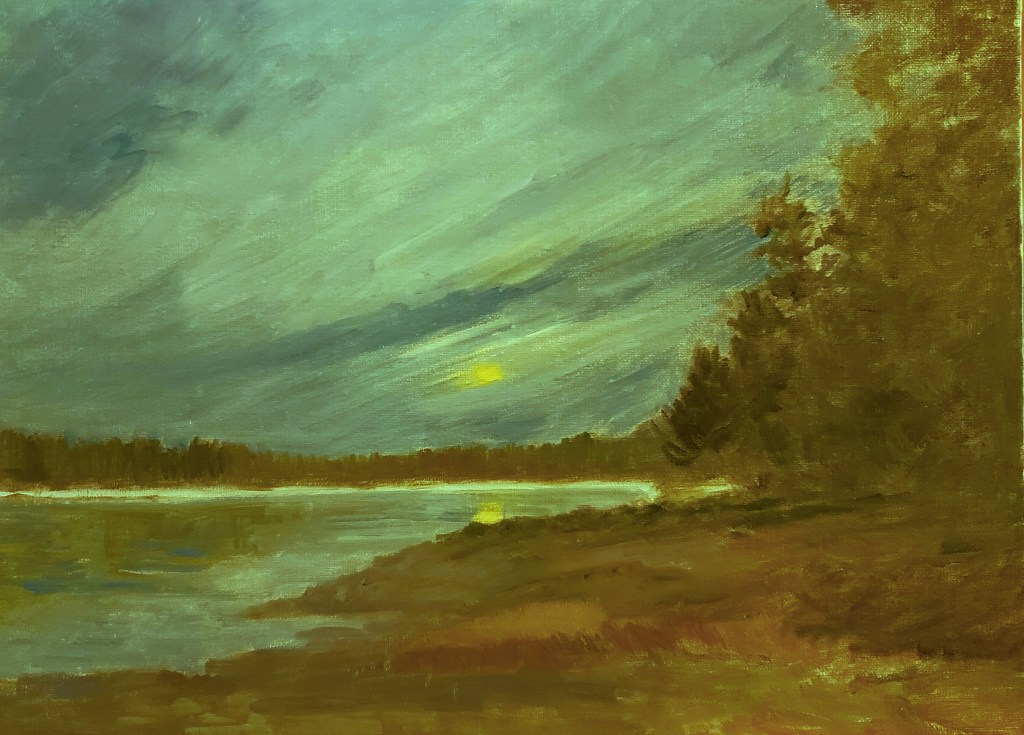

Creating a “palette of color” is a challenge. I never try to replicate the photograph color. I try to re-create the impression of the color that I observed. In this case I just remember the glowing golden color of the sun and soft shades of lavender blue in the sky with streaks of warm tone. The trees formed a consistent dark mass and the foreground grasses and bank were lighter shades of warm blue browns. There are three nice warm tufts of grass which show recession into the distance. The biggest challenge when working from a photograph is not to try to literally copy. If you want to keep the true “retinal” image, which is the image that you actually see when you work on location, you must avoid putting in every detail that the “camera eye” sees. I just want to suggest the detail not replicate the photograph.

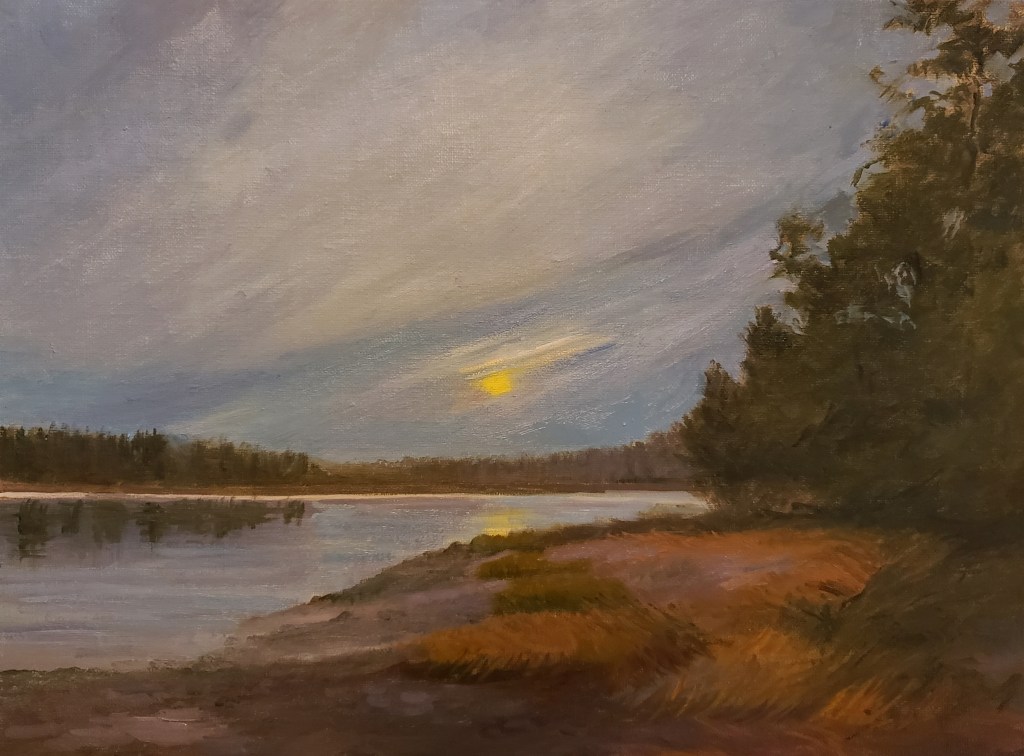
The most dramatic element is the setting sun. I will pull up the chroma in the sun and accent the contrast of light and dark so that the eye is pulled to this area. Everything else is a “nuance” just a suggestion of color and form. Too much information will destroy the focus.
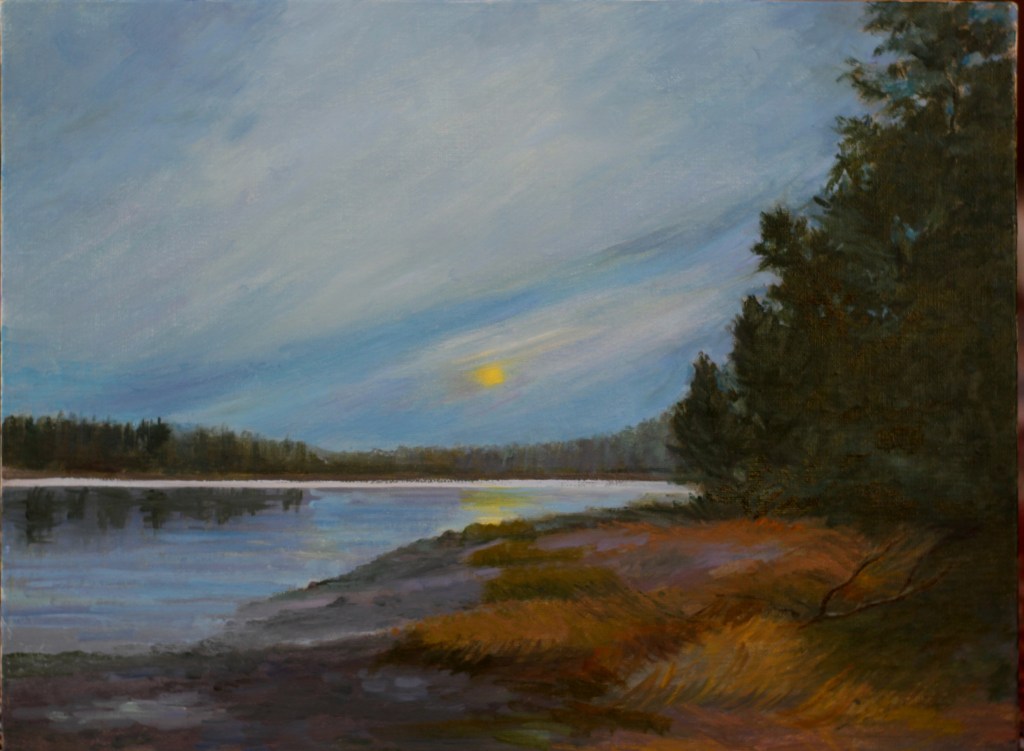
I am giving this painting to a dear friend who just lost her husband. Sunsets are sometimes thought of as endings. On this long walk which ended near this juncture right as the sun was setting I was sad thinking of my own son who left this world three years ago this month. It is very hard to understand grief but one thing I do understand is without a way of expressing sadness it is even harder to get through it. I like to think of my son and my loved ones who have left this earth as entering another realm, a heaven if you will. Being in Nature at moments like this reminds me of this feeling.
Do Not Stand at My Grave and Weep
By Mary Elizabeth Frye
Do not stand at my grave and weep
I am not there; I do not sleep.
I am a thousand winds that blow,
I am the diamond glints on snow,
I am the sun on ripened grain,
I am the gentle autumn rain.
When you awaken in the morning’s hush
I am the swift uplifting rush
Of quiet birds in circled flight.
I am the soft stars that shine at night.
Do not stand at my grave and cry,
I am not there; I did not die.
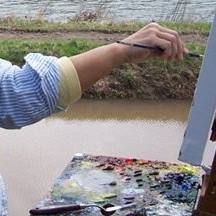
FABULOUS and very helpful. What a wonderful blog. Thank you, Jeanean. Will pass on your blog site to every aspiring landscape and nature loving painter I know. Keep going! what a gift you are and are giving us.
LikeLike
Oh my goodness Elle you are too kind. Thank you. Writing my thoughts down actually help me too. I just heard from the friend who just lost her husband and she is so happy to have the painting. I am glad I made that decision to give it to her.
LikeLike
I appreciated this blog both for the discussion of doing a studio painting but also for ideas about both starting a plein air and finishing a plein air in the studio. Made a comment on an earlier blog but had trouble posting it. The computer said I had an invalid e-mail.
LikeLike
Hi JJ. Gratifying to know there is someone who knows how to paint and appreciates good art also appreciates some thoughtful musings about what it is we do and why we do it. This painting had some emotional overtones as you saw in the blog. Painting can be cathartic. It’s very helpful for me to evaluate the work from time to time just to keep tabs on myself. Thanks again love hearing from you.
LikeLike
A poignant painting. Grief has no bound
LikeLike
♥️
LikeLike